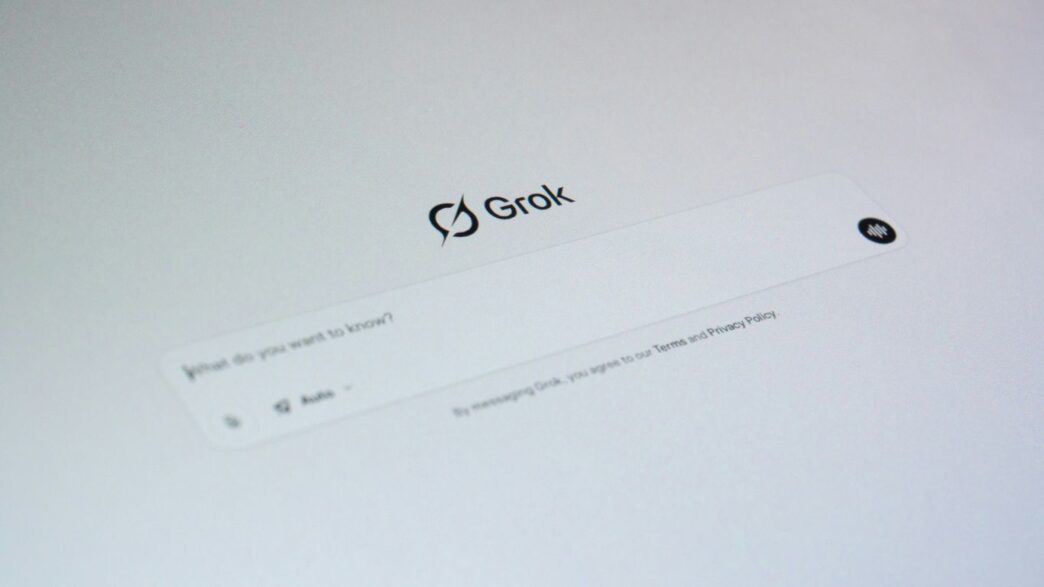Artificial intelligence chatbots are changing how we interact with technology. These aren’t your grandma’s chatbots anymore. They’ve gotten really smart, able to chat like a person and do some pretty amazing things. Businesses are starting to see how useful ai chat can be, from helping customers to making work run smoother. Let’s take a look at how far they’ve come and what’s next.
Key Takeaways
- AI chat has evolved from simple programs to complex systems that understand and respond like humans.
- New AI chat tools can now handle many tasks, like answering questions, generating images, and summarizing information.
- Businesses can save money and improve how they serve customers using ai chat.
- There are still challenges with ai chat, like making sure they are fair, private, and easy to connect with other systems.
- The future looks bright for ai chat, with potential to change how we work and live even more.
The Evolution and Current State Of AI Chat
From ELIZA to Advanced Conversational AI
It feels like just yesterday we were talking to clunky chatbots that could barely understand a simple question. But the truth is, AI chat has been around for a while, way longer than most people realize. Back in 1966, a program called ELIZA was created. It was pretty basic, mostly just repeating your words back to you in a different way, like a therapist. It used simple tricks to make it seem like it understood, but it was really just pattern matching. Still, for its time, it was a big deal and showed people what was possible.
Fast forward to today, and wow, what a difference. We’ve moved way past ELIZA’s simple tricks. Modern AI chatbots use complex machine learning and something called natural language processing (NLP) to actually understand what we’re saying. They can figure out our intent, remember what we talked about earlier in the conversation, and even generate responses that sound pretty human. It’s not just about answering questions anymore; these AI systems are getting really good at holding conversations.
Key Applications Across Industries
These smarter chatbots aren’t just for fun; they’re showing up everywhere and making a real impact. Think about customer service – chatbots are now available 24/7, answering common questions and sorting out simple problems without a human needing to step in. In online shopping, they help you find what you’re looking for, suggest items you might like, and even guide you through the checkout process.
It’s not stopping there. In healthcare, they can help with initial symptom checks or booking appointments. Banks are using them to answer questions about your accounts. Even in schools, they can provide information about courses or study materials. It’s pretty amazing how they’re being used to make things easier in so many different fields.
Here’s a quick look at where you’ll find them:
- Customer Support: Always on, answering FAQs, solving basic issues.
- E-commerce: Helping with product searches and buying.
- Healthcare: Initial symptom assessment, scheduling.
- Finance: Account queries, basic financial advice.
- Human Resources: Onboarding new employees, answering HR questions.
- Education: Student support, course information.
- Travel: Booking assistance, itinerary planning.
Limitations of Today’s AI Chatbots
Even with all these improvements, it’s not perfect yet. Sometimes, these chatbots still get confused. If you ask something really complicated or something they haven’t been trained on, they can stumble. They also struggle with understanding subtle human emotions or sarcasm, which makes conversations feel a bit stiff. Maintaining a natural flow over a long chat can still be a challenge. If the conversation goes off track, they might lose the thread. So, while they’re much better, there’s still a ways to go before they can truly chat like a person.
Emerging Trends Shaping AI Chatbot Development
The world of AI chatbots isn’t standing still, not by a long shot. Things are moving fast, and a few big trends are really changing how these bots work and what they can do. It’s pretty exciting stuff, honestly.
First off, Natural Language Processing (NLP) is getting a serious upgrade. Think about it: the better a bot can understand and use human language, the more useful it becomes. We’re seeing models that can learn from just a few examples, which is a huge leap. This means chatbots can get up to speed on new topics or tasks much faster than before. This ability to grasp new concepts with minimal training is a game-changer for adaptability. Plus, they’re getting much better at remembering what you talked about earlier in a conversation and responding in ways that actually make sense. It’s moving beyond just simple Q&A to more genuine back-and-forth.
Then there’s the whole integration piece. Chatbots aren’t just standalone things anymore. They’re starting to play nicely with other advanced tech. Imagine a chatbot connected to your smart home devices, or one that can work with augmented reality to show you how to fix something. This opens up a lot of practical uses. We’re also seeing a big push towards voice. Talking to a bot feels more natural than typing for many people, and with more people using smart speakers and voice assistants, it just makes sense. It’s all about making interactions smoother and more accessible.
Here are some of the key areas driving these changes:
- Smarter Language Understanding: Bots are getting better at picking up on nuances, slang, and even the emotional tone of what you’re saying. This leads to more helpful and less frustrating interactions.
- Voice Integration: The rise of voice assistants means chatbots are increasingly designed to understand and respond to spoken commands, making them more convenient.
- Cross-Technology Connections: Chatbots are being linked with things like the Internet of Things (IoT) and AR/VR, creating new ways to interact with the digital and physical worlds.
- Faster Responses: With advancements like edge computing, chatbots can process information and respond more quickly, which is a big deal for real-time applications.
These trends are pushing chatbots beyond basic customer service. They’re becoming more capable assistants that can handle more complex situations. The market for these kinds of tools is growing rapidly, showing just how much businesses are investing in this technology AI chatbot market growth.
It’s not just about making bots smarter, but also about making them more integrated into our daily lives and work. The goal is to create digital helpers that feel less like programs and more like capable partners.
Unlocking Business Opportunities with AI Chat
So, AI chatbots aren’t just fancy tech toys anymore. They’re actually becoming serious business tools, and honestly, it’s pretty exciting to see what they can do. Think about it – these things can handle a ton of customer questions all at once, 24/7. This means your support team can focus on the really tricky stuff instead of answering the same basic questions over and over. This kind of automation can lead to some serious cost savings and make your whole operation run a lot smoother.
And it’s not just about saving money. Customers are starting to expect more personalized interactions, right? AI chatbots can remember past conversations and tailor their responses, which makes people feel more understood and, hopefully, more loyal to your brand. It’s like having a super-efficient, always-on assistant for everyone who interacts with your business.
Here are some of the ways businesses are seeing real benefits:
- Cutting Costs: Automating routine tasks like answering FAQs or processing simple requests frees up human staff and reduces overhead. Some companies have reported saving millions just by shifting these tasks to AI.
- Happier Customers: Providing quick, relevant answers anytime, day or night, really makes a difference. Personalized interactions build stronger relationships.
- Smart Insights: Every chat generates data. Analyzing this data can show you what customers really want, what problems they’re having, and how you can improve your products or services.
- Growing Without Breaking the Bank: Need to handle a sudden rush of inquiries? Chatbots can scale up instantly without you needing to hire a whole new team. It’s a game-changer for managing busy periods.
- New Ways to Make Money: Businesses that build really good chatbots might even be able to sell that technology to other companies. It’s a whole new market opening up.
Basically, if you’re not looking into AI chat for your business, you might be missing out on a big opportunity to get ahead of the competition and serve your customers better.
Navigating the Challenges in AI Chatbot Implementation
So, you’re thinking about bringing an AI chatbot into your business. That’s great! But before you jump in, it’s good to know there are a few bumps in the road. It’s not always as simple as flipping a switch.
Ethical Considerations and Bias Mitigation
One big thing to watch out for is making sure the AI is fair. If the data used to train the chatbot has some built-in biases, the bot might end up treating people unfairly. Imagine a hiring bot that accidentally favors certain types of candidates because of how it was trained. That’s not good. To avoid this, you need to use varied data for training and keep an eye on the bot’s behavior to catch any unfairness early on. Setting clear rules about what’s okay and what’s not for the AI is also super important.
Ensuring Data Privacy and Security
These chatbots often deal with personal stuff – customer names, addresses, maybe even payment details. Keeping that information safe is a really big deal. Laws like GDPR and CCPA mean companies have to be extra careful. You’ve got to have solid systems in place to protect data and be upfront with people about how you’re using and storing their information. No one wants their private details floating around.
Integration Complexities with Existing Systems
Lots of businesses, especially older ones, have systems that have been around for ages. Trying to get a shiny new AI chatbot to talk nicely with these old systems can be a real headache. It often takes a lot of work and time to make them compatible. Sometimes, you need special connectors or software to bridge the gap between the old and the new.
Maintaining Context and Handling Ambiguity
Even the smartest chatbots can get confused. Keeping track of what you were talking about a few messages ago, especially in a long chat, is tough. And what about when you say something that could mean a couple of different things? The AI might not get it right. Figuring out how to make chatbots understand the flow of conversation and the fuzzy bits of human language is still a work in progress. It requires smart programming and constant updates to the AI’s language skills.
Real-World Impact: AI Chat in Healthcare
Healthcare is one area where AI chat technology is really starting to make a difference. It’s not just about answering simple questions anymore; these systems are getting quite sophisticated.
AI-Powered Virtual Assistant for Risk Assessment
Think about something as serious as assessing health risks. We’ve seen AI assistants developed that can look at a lot of patient information and medical research. They use advanced language models, like those from OpenAI, to help figure out individual risk levels for things like cancer. This is a big deal because it helps doctors and patients get a clearer picture faster. It can process huge amounts of data, which is something humans struggle with, especially when medical knowledge is always changing.
Leveraging Advanced Language Models
These systems are built on powerful language models. They can understand complex medical terms and patient histories. This allows them to:
- Provide personalized risk evaluations.
- Keep up with the latest medical research.
- Offer consistent assessments every time.
- Help sort patients who need attention most urgently.
It’s like having a super-smart assistant that never gets tired and has access to all the latest medical journals.
Addressing Critical Healthcare Challenges
AI chat in healthcare isn’t just a convenience; it’s helping tackle some major problems. It can help manage the sheer volume of patient data and medical studies. It also helps make sure that risk assessments are done the same way every time, no matter who is using the system. This consistency is incredibly important in healthcare. Plus, by helping to figure out who needs care first, it can make better use of limited medical resources. It’s a step towards making healthcare more efficient and maybe even more accessible.
The Future Potential of Advanced AI Chat

It’s pretty wild to think about where AI chat is headed. We’ve moved past simple question-and-answer bots. The next wave is going to be something else entirely. Imagine AI that doesn’t just respond, but truly understands and anticipates your needs. This isn’t science fiction anymore; it’s the direction we’re actively moving in.
Transforming Business Operations and Innovation
Businesses are going to see some big changes. AI chat will become less about just handling customer service tickets and more about being a core part of how companies operate. Think about it: AI could help brainstorm new product ideas by analyzing market trends and customer feedback in real-time. It could also streamline complex internal processes, like managing project workflows or even assisting with legal document review. This frees up human employees to focus on the really creative and strategic work that machines can’t replicate.
- Automating complex workflows: AI can manage multi-step processes, reducing errors and speeding up delivery times.
- Personalized product development: Analyzing vast amounts of data to suggest new features or entirely new products tailored to specific customer segments.
- Enhanced internal communication: AI assistants can help employees find information, schedule meetings, and manage tasks more efficiently.
Increasing Sophistication and Empathy in AI
One of the most exciting areas is how AI is developing more nuanced communication skills. We’re talking about AI that can pick up on subtle cues, understand sarcasm, and even express a form of empathy. This doesn’t mean AI will have feelings, but it will be much better at responding in ways that feel more human and supportive. This is a game-changer for fields like mental health support or elder care, where a sensitive and understanding interaction is key.
- Contextual memory: AI will remember past conversations and use that information to provide more relevant and personalized responses.
- Emotional intelligence simulation: AI will be able to detect user sentiment and adjust its tone and response accordingly.
- Adaptive learning: Chatbots will continuously learn from interactions, becoming more effective and helpful over time.
The Strategic Imperative of AI Adoption
Honestly, if businesses aren’t thinking about adopting advanced AI chat now, they’re going to get left behind. It’s not just a nice-to-have; it’s becoming a necessity for staying competitive. Companies that embrace this technology will be able to offer better customer experiences, operate more efficiently, and innovate faster than their rivals. The future belongs to those who integrate AI thoughtfully into their core strategies. It’s about more than just technology; it’s about rethinking how we work and interact in a digital world.
Looking Ahead
So, where does all this leave us? AI chatbots are no longer just a futuristic idea; they’re here, and they’re getting smarter by the day. We’ve seen how they’ve moved past simple Q&A to become real assistants that can help with all sorts of tasks, from managing your smart home to helping doctors assess risks. Sure, there are still some bumps in the road, like making sure they’re fair, private, and don’t get confused in long chats. But the progress is undeniable. Businesses that start thinking about how to use these tools now will likely find themselves ahead of the game. It’s an exciting time, and the possibilities for what these AI helpers can do seem to grow every single day.














